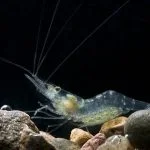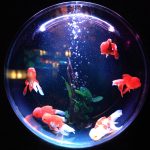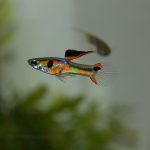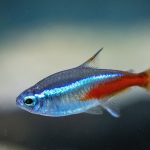Neon Tetra – A Complete Care Guide for Keeping Vibrant and Healthy Fish
Small, colorful fish known as neon tetras are preferred by aquarists for their striking hues and calm temperament. Neon Tetras need the proper care if you plan to maintain them in your aquarium if you want to assure their health and lifespan. This comprehensive care guide will go through all facets of caring for neon tetra, including as tank setup, feeding, maintaining water quality, behavior, breeding, and frequent health problems. You may give your Neon Tetras the best environment possible and take pleasure in their beauty for many years by according to these rules.
Setting Up the Aquarium
To provide a comfortable and suitable habitat for your Neon Tetras, it’s important to set up the aquarium correctly.
Selecting the Right Tank
When choosing a tank for Neon Tetras, consider a minimum tank size of 10 gallons. A larger tank is always better, as it provides more stability and swimming space for the fish. Ensure the tank has a tight-fitting lid to prevent any jumps or escapes.
Providing Proper Lighting
Neon Tetras thrive in well-lit environments. Use appropriate aquarium lighting, preferably with a color temperature between 6500K and 7500K, to simulate natural daylight. Ensure a photoperiod of 8-10 hours per day to establish a regular day-night cycle.
Choosing Substrate and Decorations
Opt for a fine-grained substrate, such as sand or small gravel, as Neon Tetras enjoy sifting through it. Add some driftwood, rocks, and live plants to create hiding spots and replicate their natural habitat. Live plants also contribute to better water quality.
Maintaining Water Parameters
Neon Tetras prefer slightly acidic to neutral water conditions. Aim for a pH level between 6.5 and 7.0 and a temperature range of 72-78°F (22-26°C). Use a reliable heater and thermometer to maintain consistent water temperature. Additionally, ensure proper filtration to keep the water clean and well-circulated.
Feeding Neon Tetras
A balanced and nutritious diet is crucial for the health and vibrant colors of Neon Tetras.
Choosing the Right Diet
Neon Tetras are omnivorous and require a combination of high-quality dry and live or frozen foods. Provide them with a staple diet of quality flake or pellet food specially formulated for tropical fish. Supplement their diet with small live or frozen foods like brine shrimp, daphnia, or bloodworms to mimic their natural diet.
Feeding Frequency and Quantity
Feed your Neon Tetras small portions multiple times a day, rather than a single large meal. Offer an amount that they can consume within 2-3 minutes, ensuring there is no leftover food to prevent water quality issues.
Supplementary Food Options
Occasionally, introduce vegetable-based foods like spirulina flakes or blanched vegetables, such as cucumber or zucchini, to provide a varied diet. These additional food options contribute to the overall health and vitality of your Neon Tetras.
Maintaining Water Quality
Proper water quality maintenance is essential for the well-being of Neon Tetras and the overall health of your aquarium ecosystem.
Cycling the Aquarium
Before introducing Neon Tetras to a new aquarium, it’s crucial to establish the nitrogen cycle. This process involves beneficial bacteria breaking down harmful ammonia into less toxic substances. Monitor water parameters, including ammonia, nitrite, and nitrate levels, to ensure the tank is cycled properly.
Monitoring Water Parameters
Regularly test water parameters using reliable test kits. Maintain stable ammonia and nitrite levels at zero, while nitrate levels should be kept below 20 ppm. Monitoring pH, temperature, and hardness is also essential to detect any changes that might affect the fish.
Performing Regular Water Changes
Perform routine water changes of around 20% every week to maintain water quality. This helps remove accumulated toxins and replenish essential minerals. Use a siphon to vacuum debris from the substrate during water changes.
Adding Live Plants
Live plants not only enhance the aesthetics of the aquarium but also contribute to better water quality by absorbing nitrates and providing oxygen. Choose plants suitable for your tank setup and provide proper lighting and nutrition to support their growth.
Neon Tetra Behavior and Tankmates
Understanding Neon Tetra behavior and selecting suitable tankmates are essential for a harmonious community aquarium.
Understanding Neon Tetra Behavior
Neon Tetras are peaceful and social fish that prefer to be kept in groups of at least six or more. They exhibit shoaling behavior, so maintaining a group helps reduce stress and promotes their natural behavior. Ensure the tank provides enough swimming space and hiding spots for them.
Suitable Tankmates for Neon Tetras
When choosing tankmates for Neon Tetras, consider other peaceful fish that share similar water parameter requirements. Good choices include other small tetras, rasboras, peaceful gouramis, and small catfish like Corydoras. Always research the compatibility and behavior of potential tankmates before adding them.
Avoiding Aggressive Tankmates
Avoid keeping Neon Tetras with aggressive or fin-nipping fish, as they are delicate and can be easily stressed or injured. Avoid cichlids, large aggressive barbs, and aggressive species like bettas or goldfish. Aggression can lead to the loss of Neon Tetra’s vibrant colors and overall health.
Common Diseases and Health Issues
Neon Tetras are generally hardy, but they can still be susceptible to certain diseases and health issues.
Recognizing Common Neon Tetra Diseases
Some common diseases affecting Neon Tetras include ich (white spot disease), fin rot, and neon tetra disease. Watch out for symptoms like loss of appetite, abnormal swimming patterns, discoloration, or visible signs of infection. Promptly address any signs of illness to prevent the spread of diseases.
Preventive Measures
Maintaining optimal water conditions, proper diet, and a stress-free environment are crucial preventive measures. Quarantine new fish before introducing them to the main tank to prevent the introduction of diseases. Regularly observe and monitor your Neon Tetras for any changes in behavior or appearance.
Treatment Options
If you notice any signs of illness, it’s important to take immediate action. Consult a knowledgeable aquarist or a veterinarian experienced in fish diseases for accurate diagnosis and treatment options. Treatments may include medication, adjusting water conditions, or isolating affected fish for closer observation.
Breeding Neon Tetras
Breeding Neon Tetras can be a rewarding experience, and it helps to sustain their population in captivity.
Creating Breeding Conditions
To encourage breeding, replicate their natural habitat conditions. Raise the temperature slightly to around 80°F (27°C) and provide a separate breeding tank or use a breeding box within the main aquarium. Include clumps of fine-leaved plants like Java moss or spawning mops as potential spawning sites.
Identifying Males and Females
Male Neon Tetras are usually slimmer and more brightly colored than females. During the breeding season, females appear plumper when filled with eggs. Males may exhibit more intense colors and develop a small extension on the lower part of the body known as the “neon sign.”
Spawning Process
Neon Tetras are egg scatterers, meaning they release adhesive eggs among plants or other surfaces. The eggs are generally left unattended by the parents and hatch within 24-36 hours. After spawning, remove the adults from the breeding tank to prevent them from eating the eggs.
Caring for Neon Tetra Fry
Neon Tetra fry are tiny and require microscopic food initially. Feed them infusoria, liquid fry food, or newly hatched brine shrimp until they grow large enough to accept powdered or crushed flake food. Maintain excellent water quality and provide ample hiding places to increase fry survival rates.
Conclusion
Neon Tetras are captivating and beautiful fish that can bring life and vibrancy to your aquarium. By following the guidelines provided in this complete care guide, you can create a suitable environment for your Neon Tetras, ensuring their health, longevity, and vibrant colors. Remember to maintain optimal water quality, provide a balanced diet, and understand their behavior to foster a thriving community aquarium. With proper care and attention, your Neon Tetras will flourish and become a centerpiece in your aquatic oasis.
FAQs
1. Can Neon Tetras live with other fish in a community tank?
Yes, Neon Tetras are peaceful and can coexist with other small, peaceful fish that share similar water parameters. Ensure the tankmates are not aggressive or fin-nippers to avoid stress or injury to the Neon Tetras.
2. How many Neon Tetras should I keep together?
It’s recommended to keep Neon Tetras in groups of six or more. Maintaining a larger group helps reduce stress and promotes their natural shoaling behavior.
3. How often should I feed my Neon Tetras?
Feed your Neon Tetras small portions multiple times a day, with a feeding session lasting around 2-3 minutes. Ensure they consume all the food within this time to prevent overfeeding and maintain good water quality.
4. Can I breed Neon Tetras in my home aquarium?
Yes, breeding Neon Tetras is possible in a home aquarium. Creating the right conditions, providing suitable breeding sites, and removing the parents after spawning can increase the chances of successful breeding.
5. What should I do if my Neon Tetras show signs of illness?
If you notice any signs of illness, such as loss of appetite, abnormal swimming, or discoloration, take immediate action. Consult an experienced aquarist or veterinarian knowledgeable in fish diseases for accurate diagnosis and appropriate treatment options.




